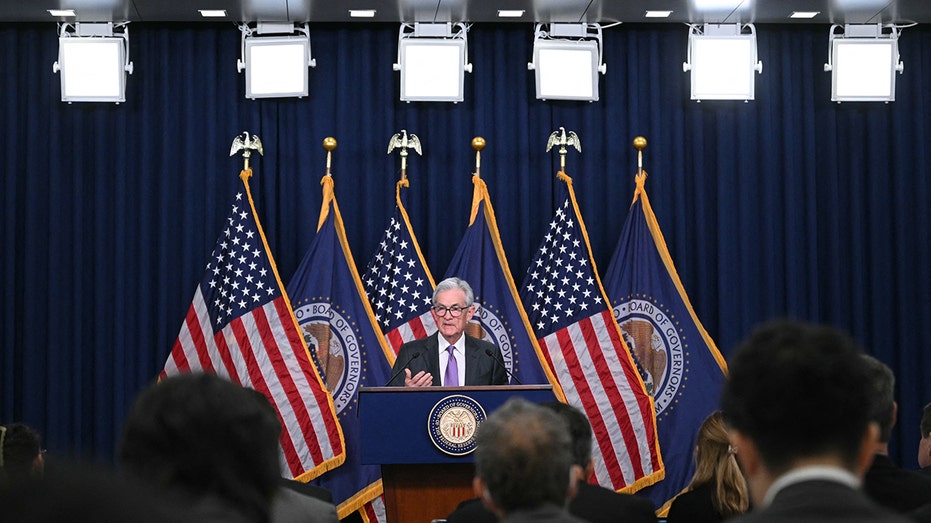Federal Reserve Chair Jerome Powell spoke May 1, trying to project an image of calm optimism. But, very much like the Wizard of Oz, the Fed doesn’t want you to pay attention to the real issue behind the curtain: Fed officials are enabling profligate government spending that is driving our economic woes – including the new, weaker-than-expected jobs report and uptick in unemployment.
To put it bluntly, the Federal Reserve has lost its way. Officials don’t know why inflation has jumped back up this year or what will happen in the coming months. They left their interest rate target unchanged because of this uncertainty. While Powell mentioned “uncertainty” in his remarks, it would be more honest if Fed officials admitted that they really don’t know what’s going on.
The Fed has enabled reckless government borrowing – which has shackled us and our children with a mountain of debt that becomes more costly every year. The Federal Reserve began increasing its balance sheet after the 2008 financial crisis, meaning they increased the money supply to make borrowing cheaper and easier. This enabled the government to spend like a drunken sailor and suffer no consequences. In that time, the federal debt grew to an unbelievable $23 trillion!
FED HOLDS RATES STEADY AS INFLATION CASTS DOUBT ON FUTURE CUTS
Normally, when governments borrow insane sums of money, interest rates rise and make additional borrowing inordinately expensive. The only reason the Biden administration has been able to add over $6 trillion to the national debt is because the Federal Reserve creates so much liquidity with its balance sheet.
Although Fed officials do their best to present their decisions as reasonable and data-driven, some of their policies are quite destructive. For example, they announced on May 1 that they would slow the reduction of their balance sheet. Yet the Fed’s balance sheet is still enormous – roughly $7.5 trillion. That’s down from a peak of $8.9 trillion a few years ago.
The Fed began shrinking its balance sheet in August 2022 by allowing maturing securities to “roll-off” the balance sheet instead of being reinvested. This “balance sheet normalization” plan allowed up to $35 billion of agency debt and mortgage-backed securities (MBS) and up to $60 billion of Treasury securities to “roll-off” the balance sheet each month.
While this plan reduced the size of their balance sheet by $1.5 trillion over the past 20 months, it remains large at $7.4 trillion. Yet Fed officials decided to slow the balance sheet reductions by $35 billion per month. In effect, the Fed has reduced the pace of quantitative tightening by 50% or more. At this new pace, the balance sheet would still be a whopping $6.9 trillion by the end of next year.
There is nothing “normal” about that.
While Powell mentioned “uncertainty” in his remarks, it would be more honest if Fed officials admitted that they really don’t know what’s going on.
The Fed’s balance sheet was less than a trillion dollars for most of its history. In January 2020, their balance sheet was “only” $4.5 trillion or so. This means that after another year and a half of “balance sheet normalization,” their balance sheet will still be about $2.5 trillion higher than it was before the pandemic – a 50% increase on an already large number!
Fed officials seem oblivious or unconcerned about the massive growth of the Fed’s balance sheet over the past two decades. Calling this policy “balance sheet normalization” is an exercise in doublespeak.
Allowing the Fed to maintain its huge balance sheet gives them permission to bailout banks and other financial institutions with impunity. They suffered no consequences and people barely batted an eye when they created $400 billion in liquidity to “stabilize” the financial system in 2023.

And their bloated balance sheet will enable the continued alarming growth of federal debt. Interest payments on the national debt are already larger than our military spending. It’s only a matter of time before Fed-enabled Washington profligacy will become so expensive that Draconian budget cuts to infrastructure, defense, Social Security and Medicare become inevitable.
Even today, we are already experiencing persistent inflation as a direct result of such wanton government spending and loose Fed policy. Every time you go to the supermarket or the gas station, you’re literally paying for these bad policies.
We need to constrain the Federal Reserve and force it to accelerate the pace of its balance sheet “normalization” if we want to see a return to fiscal sanity.
Paul Mueller, PhD, is a senior research fellow at the American Institute for Economic Research.
Read the full article here

















